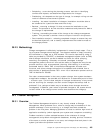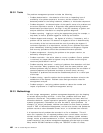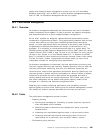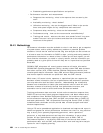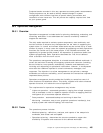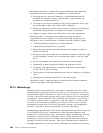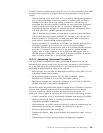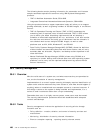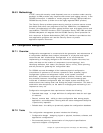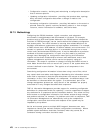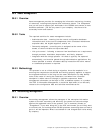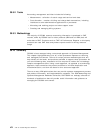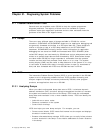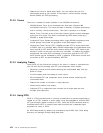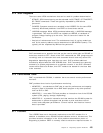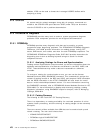
30.6.3 Methodology
In VSE, users with security needs frequently use one or another vendor security
package, as IBM provides only simple access control and logging security. In the
OS/390 environment, in addition to vendor program offerings, IBM provides the
OS/390 Security Server (a follow on to the highly regarded RACF product).
The Security Server provides system security services to ensure secure access
from batch and online user programs to flat files, VSAM files, and databases.
Printout, job submission and other system facilities such as program source and
load modules, TSO/ISPF functions, CICS Transaction Server, IMS, DB2 and other
OS/390 subsystems all integrate with the OS/390 Security Server protection for
their resources. A System Authorization (SAF) API interface is provided so that
user application programs can use the Security Server to protect
application-specific resources.
30.7 Configuration Management
30.7.1 Overview
Configuration management is concerned with the generation and maintenance of
a configuration database that contains information of all physical and logical
resources and their relationships. Configuration is not concerned with
implementing or managing changes to the information system resources, but
rather with data on the location of components (current topology), their
identifying attributes, their status (for example, active, online), future planning,
and the process for gathering the configuration data.
For OS/390 accurate knowledge of the hardware physical configuration
(connections of systems to I/O devices, systems to other systems), logical
configuration (system and subsystem names, cross system connection
definitions), and software configurations (product releases, libraries, and where
they execute) becomes increasingly important as the environment grows.
Inaccurate or obsolete configuration data can impact system availability and
waste manual time hunting down and finding the proper information. This data is
used within other disciplines, so the tasks for managing and maintaining it are
important to carry out.
Configuration management data requirements include the following:
•
Standard data usage - a single definition of configuration data for each type
of resource.
•
Shared, common data - ability to share configuration data among people,
application, and subsystems. Sharing with the asset management discipline
is particularly important.
•
Reliable data - the ability to dynamically update the configuration database.
30.7.2 Tasks
The configuration management process includes the following:
•
Configuration design - designing logical or physical, hardware, software, and
applications configurations.
•
Environmental planning - determination of the physical specifications
required to support a configuration.
Chapter 30. Systems Management Philosophy and Methodology 469



